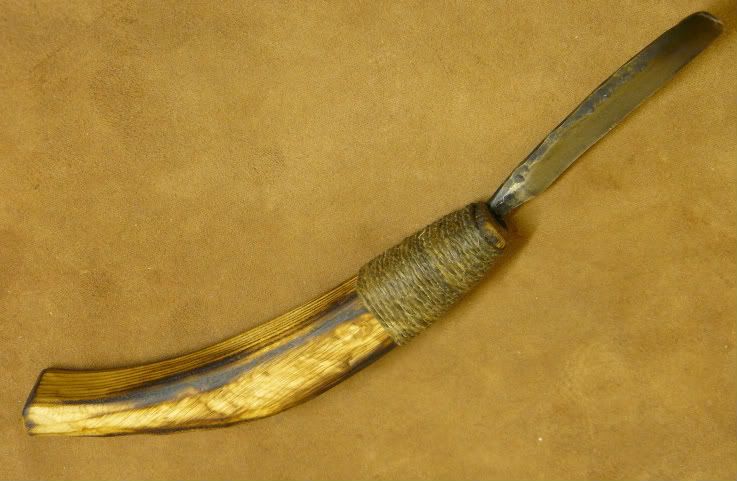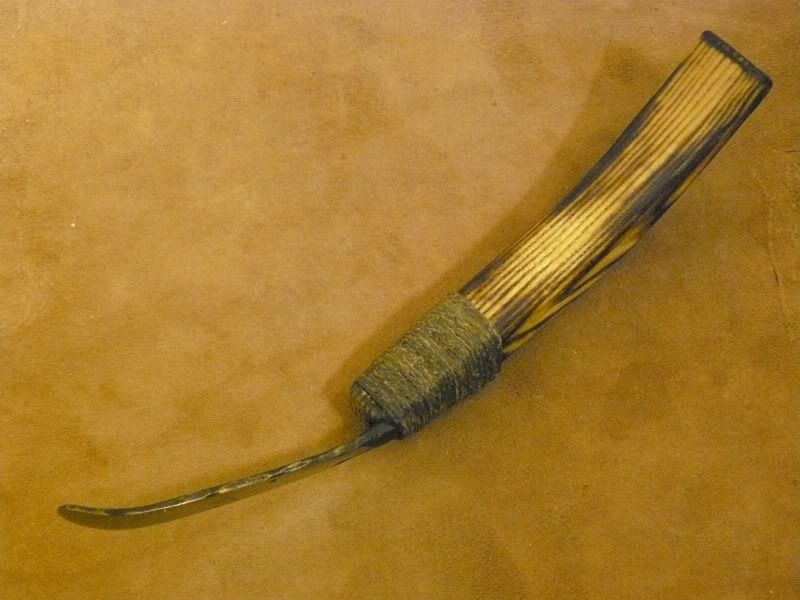I like crooked knives, and have made quite a lot of them. I can't think why they don't seem to be that popular, particularly on my side of the pond (UK) They seeem to be the perfect green wood craft tool to me.
Do you guys make and use them?


I am a leftie so this is a left handed tool. The handle is American Oak, the blade is forged out of silver steel. The tang has a pin though the handle, glued in place with pine resin/beeswax/charcoal glue, then seized in place with a heavily waxed, thick linen thread.
Do you guys make and use them?


I am a leftie so this is a left handed tool. The handle is American Oak, the blade is forged out of silver steel. The tang has a pin though the handle, glued in place with pine resin/beeswax/charcoal glue, then seized in place with a heavily waxed, thick linen thread.




